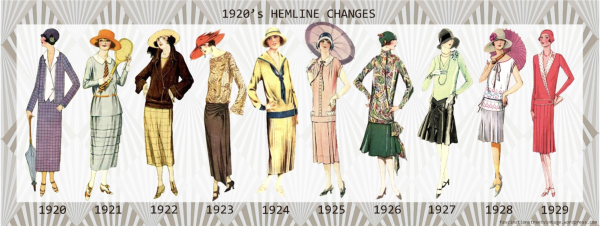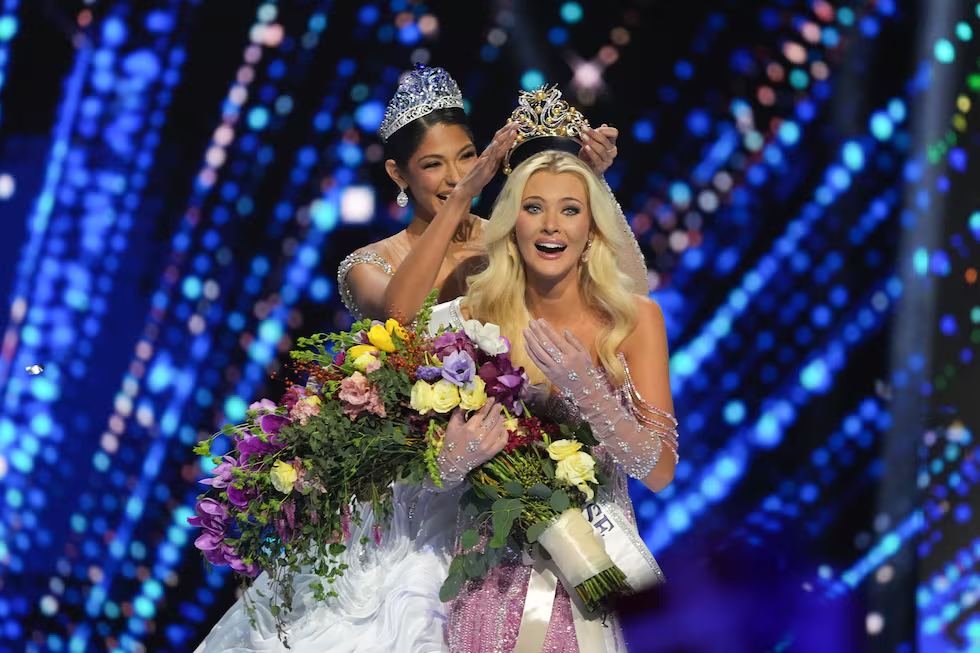The deconstruction a fading mirage: Review of ‘Did you know that there’s a tunnel under Ocean Blvd’

Lana Del Rey’s legacy has proven itself unmatched, whether it be her pop songs or lengthy, wordy ballads, many find themselves drawn to her repertoire above anyone else’s even a over decade into her extensive career: and ‘Did you know that there’s a tunnel under Ocean Blvd’ serves as no exception. The album is an exploration of the singer-songwriter’s life beyond her stage name and artistry, adding humanity to the mirage that is Lana Del Rey. However, the album still contains those characteristics synonymous with the singer’s past works: the Neil Krug photoshoots, retro imagery/inspiration, and grand instrumentation and artistry. The album’s trajectory is shaped like a tunnel, descending into the darkness and ascending back into the light. This album is personal, but it is in no way stripped down. It is raw, but it is grand. That is the beauty of Lana Del Rey, and that is the beauty of ‘Did you know that there’s a tunnel under Ocean Blvd’.
The album’s first track ‘The Grants’ serves as a testament to her family and her life, and an exploration of her last few relationships. On the chorus, Del Rey sings “Do you think about heaven / Do you think about me?”, referring to herself with the mystique and delicacy iconified through her art. The singer sees her love as pure and worthy, while perhaps the person she is singing towards does not. In a previous verse, she describes the recipient of this song as a “family man”, which is likely referring to her belief that her two respective ex-boyfriends, Sean Larkin and Clayton Johnson, were “the one” to start a family with. She then proceeds to mention that her pastor said that when one leaves “all that remains is the memory”. While heartbroken, Del Rey will take the memory of her past loves and what she learned from them with her. She sings about her grandmother and her niece, and how she’ll carry the memory of them with her as well. Through her music, she carries not just her own legacy, but her family’s as well. She does not see it as a burden, but as an honor. The track is grand and remarkable, and it serves as an intriguing opener to the record.
The album’s title track is opulent and orchestral, however the imagery is dark. In an era where artists’ relevancy is only temporary, and there are new faces every year, Del Rey is surprised at how long her career has withstood the passage of time. She sings about her time navigating the music industry, and that even after over a decade of being in it, her artistry still faces the wrath and criticisms of the world. In an interview by Billie Eilish on Interview Mag, the singer stated she never thought her career would “ever get elevated” to the point it is at today, and ‘Did you know that there’s a tunnel under Ocean Blvd’ confirms the genuinity of this statement. She longs to be remembered, and not just seen as another singer, but as an artist like those who came before her, such as Amy Winehouse and Whitney Houston.
“Sweet” is reminiscent of common themes in Lana’s repertoire involving sweetness and saccharine-adjacent feelings. The ballad is a desperate, yet sweet attempt to preserve her mystique in desperation and past romantic disappointments. She describes herself with allure and uniqueness that sets her apart from others, while also describing her frustration with being treated as if she were just anyone. Throughout the track she calls out to someone, perhaps a past lover, to look for her “in the heart of the valley / in the sweet north country”. Del Rey’s manic idealization comes off as a cute and heartfelt ballad, however it is a cry for help in a sea of unrequited love.
The fourth track ‘A&W’, standing for “American wh*re”, continues the conflict between Del Rey’s wish to be remembered but her dislike for fame as a whole. In this song, she responds to critiques about her body and her style, stating she “doesn’t give a damn after all of those years of just hearing them talking”. The song also involves her feelings towards her last relationships, like the one with Sean Larkin who unbeknownst to Lana was engaged while they were seeing each other. Del Rey has seemingly given up on her quest for love as she has had such bad luck with it in relationships prior, and she has seemingly accepted her status as “an American wh*re”. While the song is upbeat and sensual in nature, there is a sliver of sadness seen through the lyrics in a desire to settle down and have children. Del Rey is 37, and she is seemingly trying to outgrow her “sad girl” persona, and desires to be taken more seriously, however, for some reason she cannot romantically escape the solitude of being perceived as no more than an “American wh*re”.
The album’s next song “Candy Necklace”, further perpetuates Del Rey’s obsession with sweetness, describing her obsession with her lover’s “candy necklaces”. Candy necklaces are a type of candy often consumed by small children, more specifically young girls. Through this imagery, the singer is perhaps comparing herself to a little girl, drawn by the simple delicacy of the candy necklace. She further describes the man as acting reckless, and making her even feel suicidal, however she continues to be drawn in by the sheer sweetness of his love, and his “candy necklaces”. Their love is self-destructive to the singer, however she seemingly could not care less, enamored by his utter sweetness. Jon Batiste’s inclusion in the track makes for a great vocal combination between both singers, and the track is one of the album’s strongest in all ways.
“Fingertips” is much slower than its predecessors, accompanied with minimal production and instrumentation. This can be assumed to be done in order to emphasize the lyrics above all else, which in this particular case works out in a way that makes this song much more remarkable, in my opinion, than other tracks such as “Kintsugi”. “Fingertips” is seemingly a confession of sorts, rooting from the deepest crevices of the singer’s psyche. Del Rey recounts her suicide attempt as a young teenager which was followed by her mother sending her away to a boarding school, which Del Rey still resents her for to this day. The song’s overall theme is what it’s like to be in the public eye while Del Rey grapples with her own mental health and trauma. She seemingly states that she is not herself when in front of a camera or a crowd, and that she only allows herself “two seconds to cry” before going back to being a “serene queen”. In other words, Del Rey essentially leads the listener to interpret that her stage persona is not a true reflection of her identity and her past, and that fame and our perception of those who have it is but a mirage.
“Paris, Texas” is undoubtedly one of the album’s highpoints, sonically and lyrically. The track is whimsical and unique, sounding very distinct in comparison to the latter tracks on the record. “Paris, Texas” is lyrically ambiguous and hard to interpret, however it is most likely about fame, which wouldn’t be surprising as it is a recurring theme on the album and in Del Rey’s life. The singer recounts leaving L.A. for Paris, a small town in rural Texas. The chorus chants: “When you know, you know / It’s time to go”. This chorus is meaningful enough on its own, however one verse that particularly stands out is “ When everyone star’s bright, brighter than you are / It’s time to go” These lines allude to why the singer could have searched for solace within the metaphorical or literal anonymity of Paris, Texas. She later states that she returned home to Venice, California (which maintains a theme of American counties named after prolific European cities), implying that while she believed Paris would be her salvation, Venice would always be her home.
“Let the Light In” is Del Rey and Father John Misty’s second musical collaboration (excluding Misty’s tracks featuring Del Rey as mere background vocals). Their previous collaboration “Buddy’s Rendezvous” quickly became a fan favorite amongst many, as their voices and songwriting go fairly well together, and “Let the Light in” serves as no exception. The track further explores the record’s recurring theme of light and “letting it into” one’s heart. “Let the Light In” is similar to “Candy Necklace” in the sense that Del Rey has an obvious obsession with this particular romance, urging her lover to “let the light in”, referring to herself and their shared love. She sings about how even when he tries to leave, she smiles knowing that he’ll stay, which is inherently obsessive behavior. This particular romance is never dull, quite like the allure Del Rey describes in “Candy Necklace”. Overall, the song feels nostalgic for the wild Americana spirit that the singer’s older music contained, and it is aesthetically, sonically, and poetically one of the album’s best tracks.
“Fishtail” Is the first of three songs containing trap production instead of the grand classical instrumentation seen previously on ‘Did you know that there’s a tunnel under Ocean Blvd’.
“Fishtail” creates a sonic shift in the record, and it is a highly entertaining and experimental one. Del Rey sings about a lover who “wanted her sadder”, which is likely a form of manipulation and control. She sings about how she paints red flags green and that she is tired of it, not allowing her lover to braid her hair, or in other words, show physical affection towards her. The track is sonically upbeat and fun, and it contains one of the record’s catchiest choruses thus yet.
“Taco Truck x VB” is very interesting as it repurposes 2018’s “Venice B*tch” made by Lana herself. The “Taco Truck” portion talks about the singer’s lack of care for what others think about her, urging the press to print what she does, as she “already knows that they hate her”. The “Venice B*tch” portion is basically the same as the original track, however the lyrics are accompanied by a trap beat instead of the slow-rock instrumentation on the original. The trap beat does not add much, and the slow rock sound of the original definitely suits it more, however it ends the album on a high note, as “Venice B*tch” has long been regarded as one of her best tracks thus far.
To finalize, ‘Did you know that there’s a tunnel under Ocean Blvd’ is stunning, both lyrically and sonically. Critics are generally regarding the album very highly, considering it one of, if not, Del Rey’s best body of work to date. Overall, it serves as a deeper representation of df psyche beyond her stage name and media presence, deconstructing and reshaping our perception of Lana Del Rey the woman: not just the idea of this golden, shimmering figure synonymous with 21st-century girlhood. The singer’s mystique has somewhat faded over time, leaving behind a woman who feels and loves above all else:
a poet, first and foremost.
Image source:
Kazazian, Kaiman. “Lana Del Rey.” Kaiman Kazazian, https://www.kaiman.love/. Accessed 24 April 2023.
Source:
Eilish, Billie. “Lana Del Rey and Billie Eilish Fall in Love.” Interview Magazine, 14 February 2023, https://www.interviewmagazine.com/music/lana-del-rey-and-billie-eilish-fall-in-love. Accessed 24 April 2023.
Your donation will support the student journalists of The Baldwin School of Puerto Rico. Your contribution will allow us to purchase equipment and cover our annual website hosting costs.

Hey, I’m Lexi! I’m Puerto Rican and Cuban (born here in PR), and I enjoy appreciating all things artistic, whether that be films, music, photography,...






